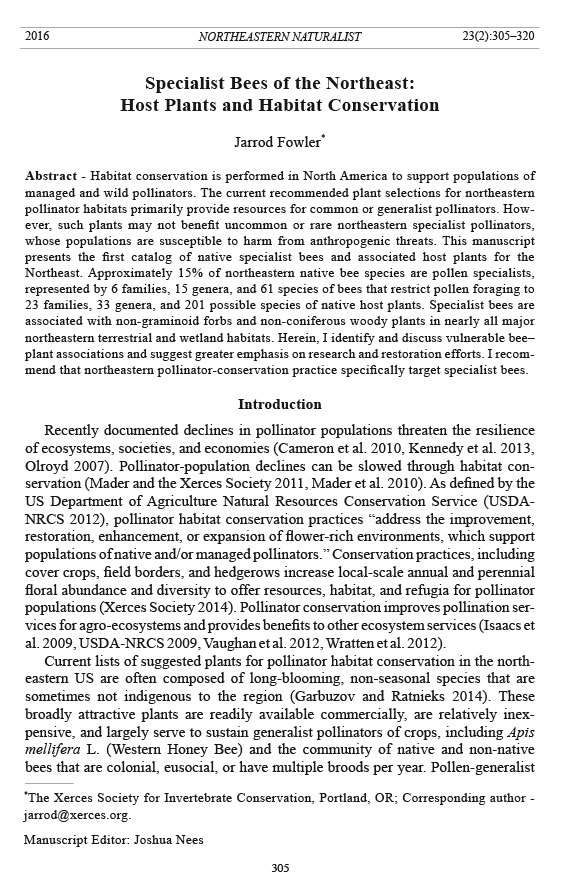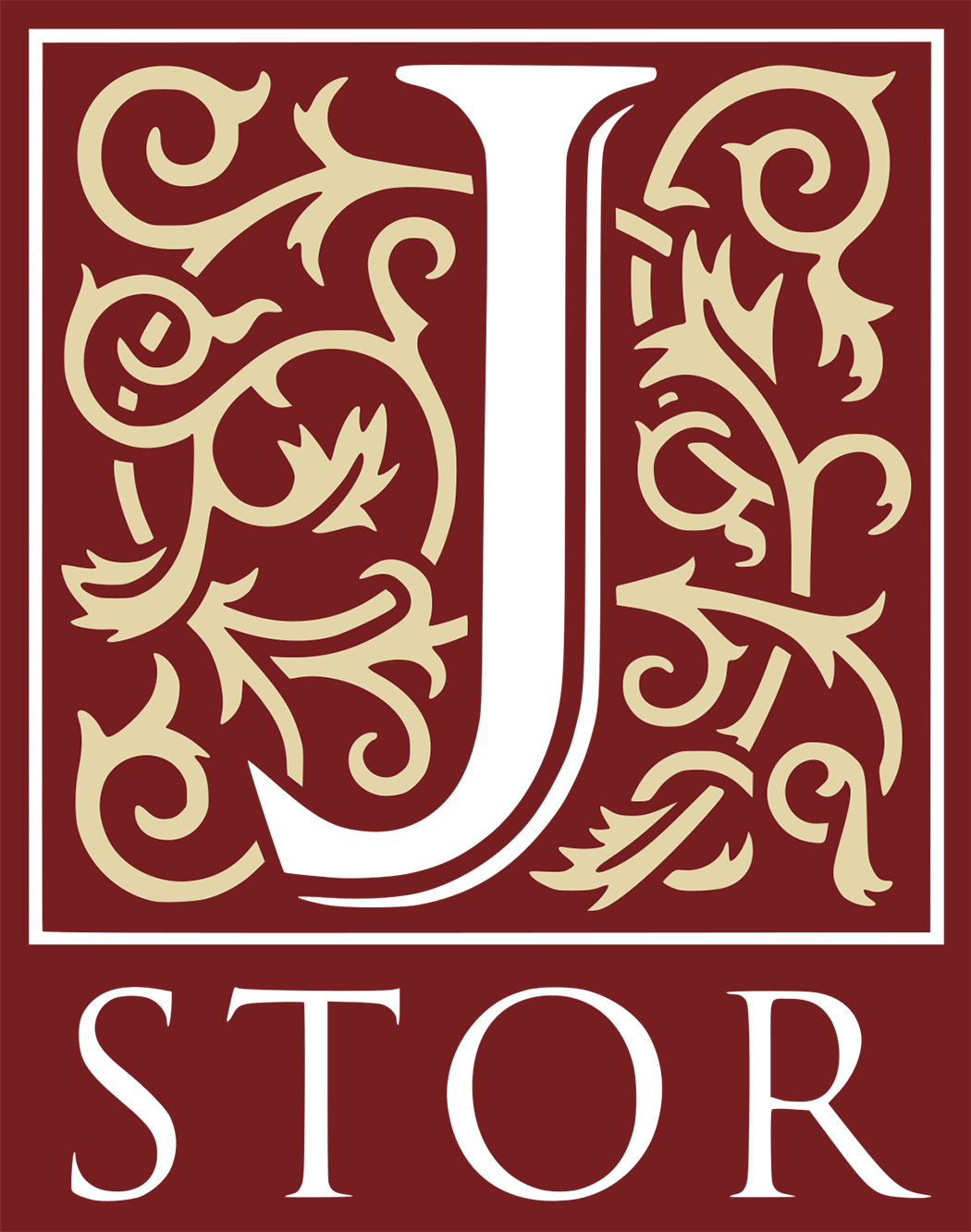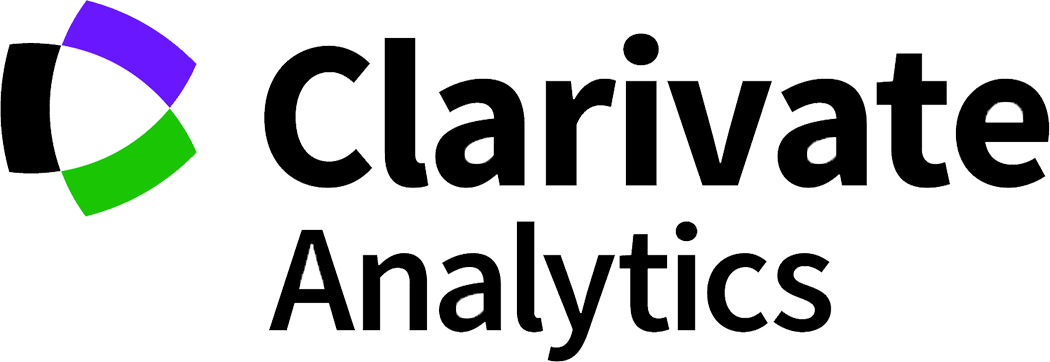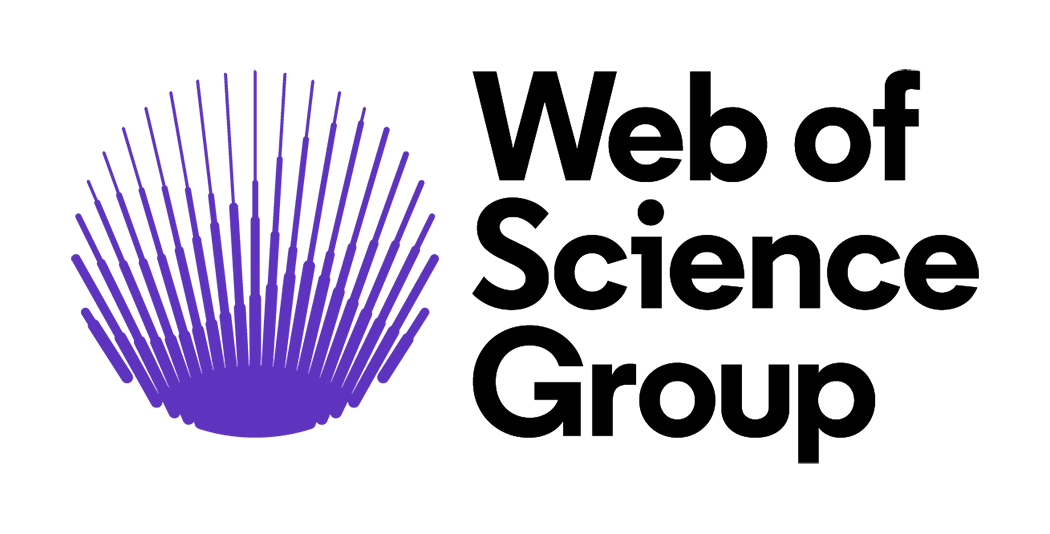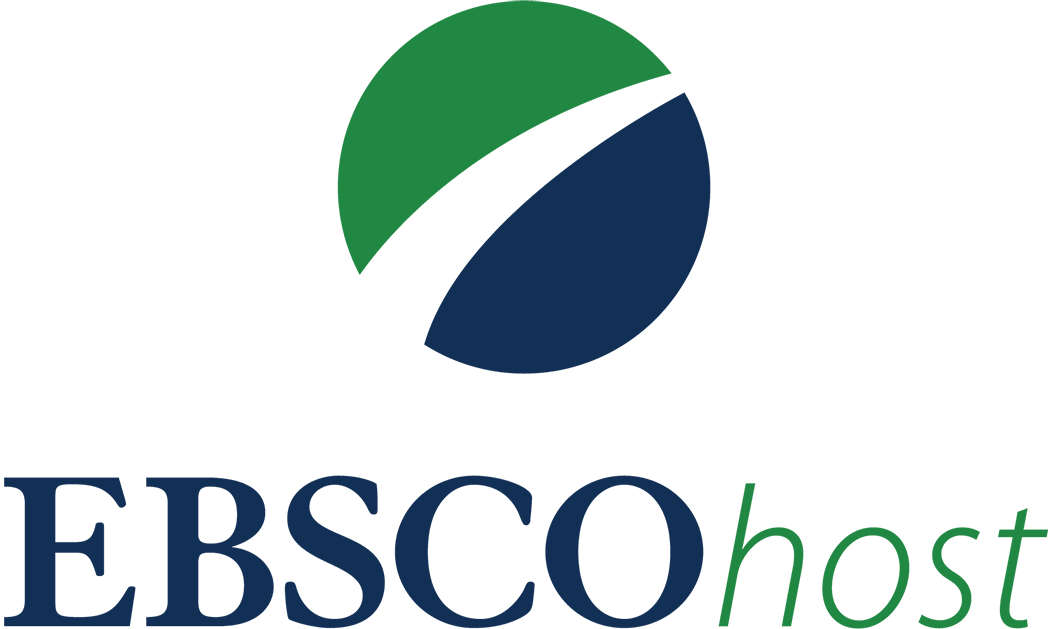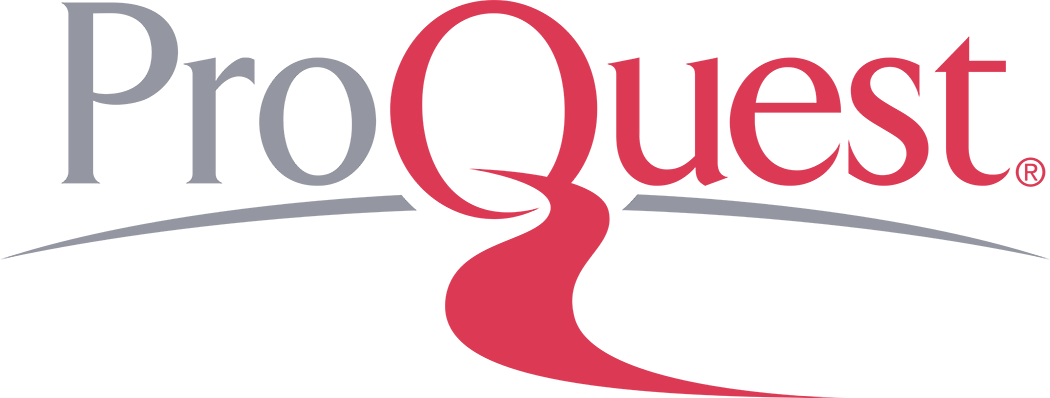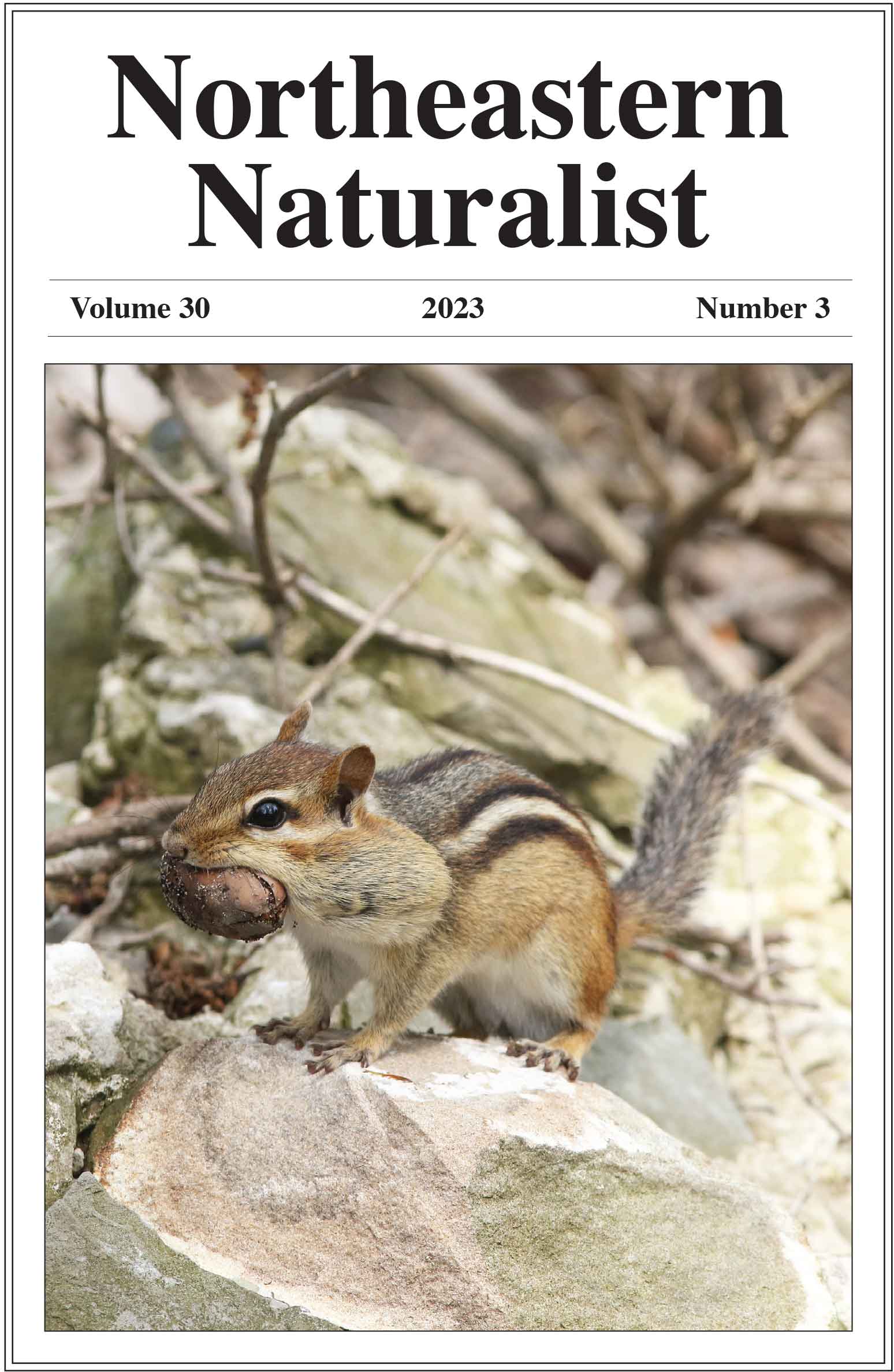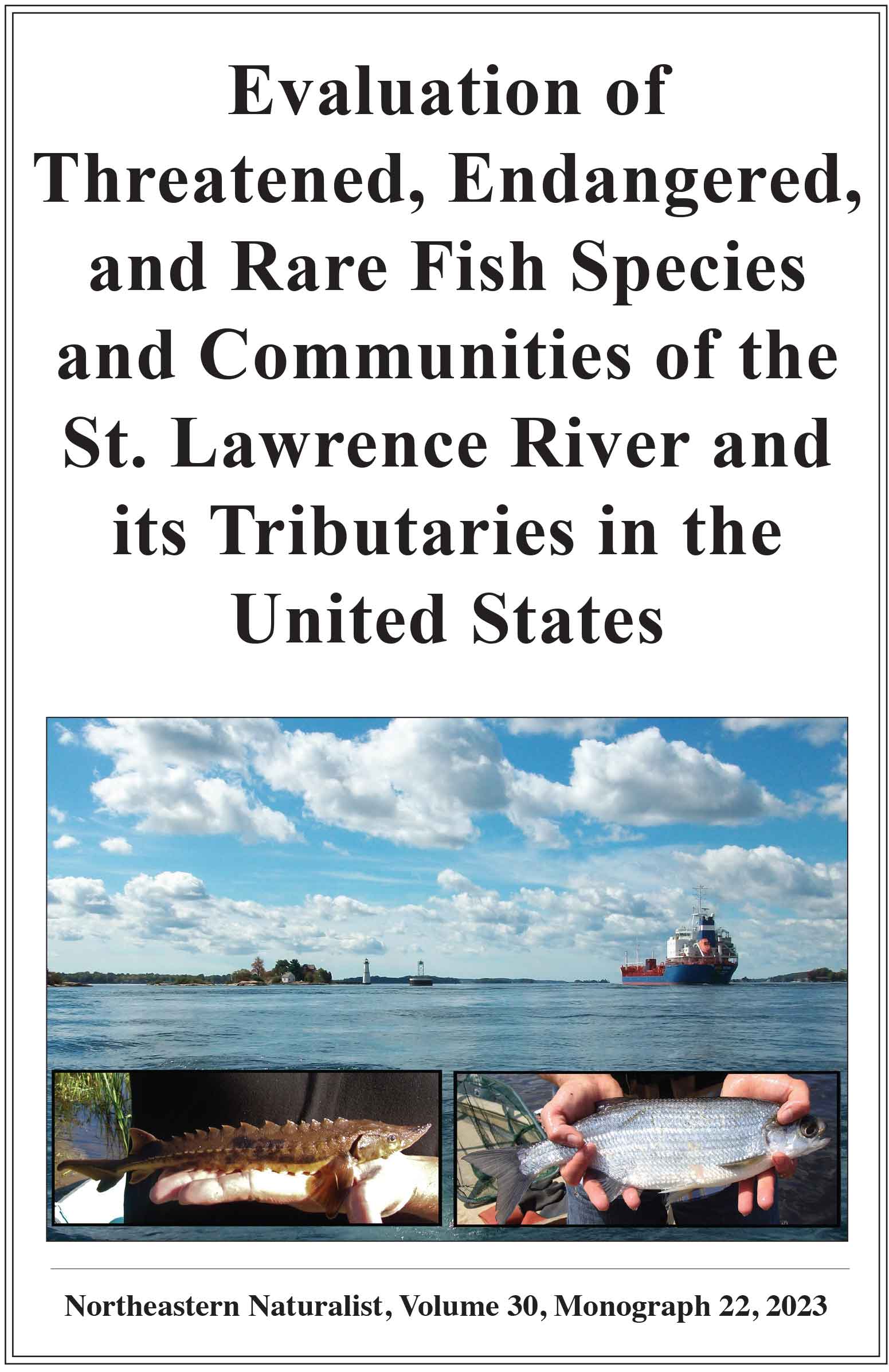Northeastern Naturalist Vol. 23, No. 2
J. Fowler
2016
305
2016 NORTHEASTERN NATURALIST 23(2):305–320
Specialist Bees of the Northeast:
Host Plants and Habitat Conservation
Jarrod Fowler*
Abstract - Habitat conservation is performed in North America to support populations of
managed and wild pollinators. The current recommended plant selections for northeastern
pollinator habitats primarily provide resources for common or generalist pollinators. However,
such plants may not benefit uncommon or rare northeastern specialist pollinators,
whose populations are susceptible to harm from anthropogenic threats. This manuscript
presents the first catalog of native specialist bees and associated host plants for the
Northeast. Approximately 15% of northeastern native bee species are pollen specialists,
represented by 6 families, 15 genera, and 61 species of bees that restrict pollen foraging to
23 families, 33 genera, and 201 possible species of native host plants. Specialist bees are
associated with non-graminoid forbs and non-coniferous woody plants in nearly all major
northeastern terrestrial and wetland habitats. Herein, I identify and discuss vulnerable bee–
plant associations and suggest greater emphasis on research and restoration efforts. I recommend
that northeastern pollinator-conservation practice specifically target specialist bees.
Introduction
Recently documented declines in pollinator populations threaten the resilience
of ecosystems, societies, and economies (Cameron et al. 2010, Kennedy et al. 2013,
Olroyd 2007). Pollinator-population declines can be slowed through habitat conservation
(Mader and the Xerces Society 2011, Mader et al. 2010). As defined by the
US Department of Agriculture Natural Resources Conservation Service (USDANRCS
2012), pollinator habitat conservation practices “address the improvement,
restoration, enhancement, or expansion of flower-rich environments, which support
populations of native and/or managed pollinators.” Conservation practices, including
cover crops, field borders, and hedgerows increase local-scale annual and perennial
floral abundance and diversity to offer resources, habitat, and refugia for pollinator
populations (Xerces Society 2014). Pollinator conservation improves pollination services
for agro-ecosystems and provides benefits to other ecosystem services (Isaacs et
al. 2009, USDA-NRCS 2009, Vaughan et al. 2012, Wratten et al. 2012).
Current lists of suggested plants for pollinator habitat conservation in the northeastern
US are often composed of long-blooming, non-seasonal species that are
sometimes not indigenous to the region (Garbuzov and Ratnieks 2014). These
broadly attractive plants are readily available commercially, are relatively inexpensive,
and largely serve to sustain generalist pollinators of crops, including Apis
mellifera L. (Western Honey Bee) and the community of native and non-native
bees that are colonial, eusocial, or have multiple broods per year. Pollen-generalist
*The Xerces Society for Invertebrate Conservation, Portland, OR; Corresponding author -
jarrod@xerces.org.
Manuscript Editor: Joshua Nees
Northeastern Naturalist
306
J. Fowler
2016 Vol. 23, No. 2
bees (polyleges) may forage unrelated plants and casually or regularly exhibit flower
constancy, but are not limited by particular pollen sources (Hurd et al. 1980).
Although pollen is the primary nutritional source for bee populations, not all
pollen is accessible or nutritionally suitable (Cane and Sipes 2006). Flowering
phenology, visual and olfactory cues, floral and pollen morphology, and nutritional
values (amino acids, lipids, proteins, secondary metabolites, starches, and sterols)
vary across and within plant species, setting stages for distinct pollen associations
and preferences (Behmer and Nes 2003, Roulston et al. 2000). Pollen can be physiologically
indigestible or may be physically or temporally unavailable for foraging
by many native specialist-bee species. Therefore, the overall bee biodiversity in the
Northeast may not be augmented by current standard plantings (Kleijn et al. 2015,
Praz et al. 2008, Roulston and Cane 2000, Senapathi et al. 2015).
Northeastern native pollen-specialist bees (oligoleges) evolved a continuum of
secondary facultative or primary obligate associations with flowering host plants
(Cane and Sipes 2006, Hurd et al. 1980, Linsley and MacSwain 1956, Robertson
1925). Oligoleges associate with one host-plant family or a few related genera or
species; monoleges specifically associate with a single host-plant genus or species
(Cane and Sipes 2006, Robertson 1925). Such associations can benefit both bee
and flower by improving foraging effectiveness and efficiency, pollen digestibility,
and pollination rates. However, restricted associations can be susceptible to harm
due to habitat degradation, fragmentation, and loss, or phenological mismatch
(Bartomeus et al. 2013, Minckley et al. 1994, Rafferty et al. 2015). Consequently,
anthropogenic threats in the Northeast potentially threaten native specialist-bee species
and their endemic, indigenous host-plant species with population declines and
extinctions through loss of plant diversity (Gavier-Pizarro et al. 2010, New England
Wild Flower Society 2015a, Radeloff 2005).
Pollen associations and preferences for many northeastern native specialist bees
can be derived from published and unpublished field observations and specimen
records (Lovell 1918; Mitchell 1960, 1962; Robertson 1926, 1929). Here, I organize
bee–plant observations and records to catalog northeastern native host-plants
for native specialist bees. This catalog provides opportunities to augment current
lists of plant selections for pollinator-habitat conservation and enhancement with
recommended host plants for specialist bees. Such recommendations can be integrated
into pollinator-habitat management practices, and are broadly relevant for
the Northeast and the adjacent regions in Canada.
Study-system Description
This research includes pollination records from the northeastern US, including
6 states: Connecticut, Maine, Massachusetts, New Hampshire, Rhode Island,
and Vermont. The Northeast is an ecologically diverse region within the temperate
broadleaf and mixed forest biome that belongs to the North American Atlantic Geobotanical
Region. This geo-botanical region is composed of 2 floristic provinces,
the Appalachian Province and Coastal Plains Province, with 1 floristic tension zone
(Kartesz 2013). The northeastern northern forests and eastern temperate forests are
Northeastern Naturalist Vol. 23, No. 2
J. Fowler
2016
307
comprised of Atlantic Highlands, Mixed Wood Plains, and Mississippi Alluvial and
Southeast USA Coastal Plains, which are further comprised of diverse microhabitats,
such as Northern Highlands, Northeastern Coastal Zones, Acadian Plains and Hills,
Eastern Great Lakes Lowlands, and Atlantic Coastal Pine Barrens (Griffith et al.
2009; Omernick 1987, 2004). Overall, humid cold-temperate and warm continental
climates with 71–200 cm of precipitation per year, average growing-season temperatures
of 12–21 ºC, average annual extreme minimum temperatures of -40 ºC to -15
ºC, and relatively moist yet well-drained, acidic to neutral upland silts/loams foster
species-dense and species-rich communities of native, endemic, exotic, and hybrid
terrestrial, wetland, and aquatic plant species (USDA-NRCS 2014).
Methods
For this study, I define specialist bees as those that restrict their pollen foraging
to only 1 host-plant family (Cane and Sipes 2006, Robertson 1925). In reality,
most specialist-bee records are associated with 1 host-plant genus or species. We
defined northeastern natives as specialist bees that are indigenous to Connecticut,
Massachusetts, Maine, New Hampshire, Rhode Island, or Vermont without human
intervention. I used online sources (Ascher and Pickering 2014; Hilty 2012),
peer-reviewed articles (Robertson 1926, 1929), technical bulletins (Mitchell
1960, 1962), and personal communications with contemporary bee researchers to
compile specimen records of ~400 species of native bees captured or observed on
flowers of host-plants. In addition to data on host-plant associations for each bee
species, I collected information concerning conservation status, habitat, native
range, nesting organization, monthly phenology, number of records per state, and
taxonomy. I included pollen-carrying native bees but not cleptoparasitic bees in
this study.
I compared bee-plant records with county-level northeastern plant distributions
from online (New England Wild Flower Society 2015b) and print sources
(Haines et al. 2011). According to plant-distribution source definitions, native
species are indigenous and non-native species are either intentionally or unintentionally
introduced species that have become naturalized; present species are
those that have been documented by herbarium specimens or photographs in a
particular county, and undocumented species are those that have never been documented
in a particular county but may be present or restricted to certain habitats
within that county (New England Wild Flower Society 2016). This study considered
only host-plant species that are native and documented as present in at least
1 county of 1 of the 6 northeastern states: Connecticut, Maine, Massachusetts,
New Hampshire, Rhode Island, or Vermont. I included records of specialist-bee
species collected from northeastern native plant genera or species, even if those
collections came from outside the region. I compiled information concerning
plant taxonomy, morphological groups, indigenous and introduced ranges, habitat
types/growing conditions, and habitat-keyword descriptions of each possible
host-plant species. As above, I analyzed and summarized the data for targeted
specialist-bee conservation and management in the northeast and nearby regions.
Northeastern Naturalist
308
J. Fowler
2016 Vol. 23, No. 2
I compared specialist-bee and possible host-plant data to determine if values
of plant groups and plant habitats change as products of associated bee richness. I
assigned each host-plant species per plant genus to 1 of 5 plant groups (D = herbaceous,
flowering dicot, M = herbaceous, flowering monocot, S = broad-leaved woody
shrub, ST = broad-leaved, woody shrub/tree, and T = broad-leaved woody tree) and
5 plant habitats (A = aquatic, AW = aquatic wetlands, T = terrestrial, TW = terrestrial
wetlands, and W = wetlands). In this study, the 5 plant habitats defined a continuum of
host-plant growing conditions, from continuously submerged soil, to permanently or
seasonally saturated soil, to arid upland soil. To express proportional importance of
host-plant and specialist-bee associations according to plant-group and plant-habitat,
I multiplied the number of host-plant species per genus according to plant group or
plant habitat by the number of associated specialist bees.
Results
Approximately 15% of northeastern native bees were pollen specialists. I catalogued
6 families, 15 genera, and 61 species of northeastern native specialist-bees
and 23 families, 33 genera, and 201 possible species of northeastern native hostplants
(Table 1, 2). The host-plant genera that were associated with the greatest
Table 1. Northeastern native specialist-bee families and species with associated host-plant families
and genera. Bee families and member genera and species with associated host-plants are presented in
ascending alphabetical order. [Continued on following page.]
Bee family/bee scientific name Plant family Plant genus
Andrenidae
Andrena aliciae Robertson Asteraceae Helianthus
Andrena arabis Robertson Brassicaceae Arabis
Cardamine
Andrena asteris Robertson Asteraceae Solidago
Asteraceae Symphyotrichum
Andrena bisalicis Viereck Salicaceae Salix
Andrena braccata Viereck Asteraceae Euthamia
Asteraceae Solidago
Andrena bradleyi Viereck Ericaceae Gaylussacia
Vaccinium
Andrena canadensis Dalla Torre Asteraceae Solidago
Andrena carolina Viereck Ericaceae Vaccinium
Andrena clarkella (Kirby) Salicaceae Salix
Andrena cornelli Viereck Ericaceae Rhododendron
Andrena distans Provancher Geraniaceae Geranium
Andrena erigeniae Robertson Portulacaeae Claytonia
Andrena erythrogaster Ashmead Salicaceae Salix
Andrena erythronii Robertson Liliaceae Erythronium
Andrena fragilis Smith Cornaceae Cornus (Swida)
Andrena frigida Smith Salicaceae Salix
Andrena geranii Robertson Boraginaceae Hydrophyllum
Andrena helianthi Robertson Asteraceae Helianthus
Andrena hirticincta Provancher Asteraceae Euthamia
Asteraceae Solidago
Andrena illinoiensis Robertson Salicaceae Salix
Northeastern Naturalist Vol. 23, No. 2
J. Fowler
2016
309
Table 1, continued.
Bee family/bee scientific name Plant family Plant genus
Andrena krigiana Robertson Asteraceae Krigia
Andrena mariae Robertson Salicaceae Salix
Andrena nigrae Robertson Salicaceae Salix
Andrena nubecula Smith Asteraceae Solidago
Asteraceae Symphyotrichum
Andrena placata Mitchell Asteraceae Solidago
Asteraceae Symphyotrichum
Andrena platyparia Robertson Cornaceae Cornus (Swida)
Andrena salictaria Robertson Salicaceae Salix
Andrena sigmundi Cockerell Salicaceae Salix
Andrena simplex Smith Asteraceae Solidago
Asteraceae Symphyotrichum
Andrena uvulariae Mitchell Colchicaceae Uvularia
Andrena violae Robertson Violaceae Viola
Andrena ziziae Robertson Apiaceae Zizia
Calliopsis nebraskensis Crawford Verbenaceae Verbena
Panurginus potentillae (Crawford) Rosaceae Potentilla
Perdita halictoides Smith Solanaceae Physalis
Perdita octomaculata (Say) Asteraceae Solidago
Pseudopanurgus nebrascensis Crawford Asteraceae Solidago
Asteraceae Symphyotrichum
Pseudopanurgus pauper (Cresson) Rhamnaceae Ceanothus
Apidae
Habropoda laboriosa (Fabricius) Ericaceae Vaccinium
Melissodes agilis Cresson Asteraceae Helianthus
Melissodes apicata Lovell and Cockerell Pontederiaceae Pontederia
Melissodes denticulata Smith Asteraceae Vernonia
Melissodes desponsa Smith Asteraceae Cirsium
Ptilothrix bombiformis (Cresson) Malvaceae Hibiscus
Colletidae
Colletes aestivalis Patton Saxifragaceae Heuchera
Colletes banksi Swenk Aquifoliaceae Ilex
Colletes latitarsis Robertson Solanaceae Physalis
Colletes productus Robertson Ericaceae Lyonia
Colletes simulans Cresson Asteraceae Euthamia
Asteraceae Solidago
Asteraceae Symphyotrichum
Colletes solidaginis Swenk Asteraceae Solidago
Halictidae
Dufourea monardae (Viereck) Lamiaceae Monarda
Dufourea novaeangliae (Robertson) Pontederiaceae Pontederia
Lasioglossum oenotherae (Stevens) Onagraceae Oenothera
Lasioglossum pectinatum (Robertson) Solanaceae Physalis
Megachilidae
Megachile oenotherae (Mitchell) Onagraceae Oenothera
Osmia virga Sandhouse Ericaceae Vaccinium
Melittidae
Macropis ciliata Patton Myrsinaceae Lysimachia
Macropis nuda (Provancher) Myrsinaceae Lysimachia
Macropis patellata Patton Myrsinaceae Lysimachia
Melitta americana (Smith) Ericaceae Vaccinium
Melitta melittoides (Viereck) Ericaceae Lyonia
Northeastern Naturalist
310
J. Fowler
2016 Vol. 23, No. 2
Table 2. Northeastern native plant families and genera with hosted bee families and species. Plant
families and member genera with hosted bees are presented in ascending alphabetical order. [Continued
on following page.]
Plant family Plant genus Bee family Bee scientific name
Apiaceae Zizia Andrenidae Andrena ziziae
Aquifoliaceae Ilex Colletidae Colletes banksi
Asteraceae Cirsium Apidae Melissodes desponsa
Asteraceae Euthamia Andrenidae Andrena braccata
Andrenidae Andrena hirticincta
Colletidae Colletes simulans
Asteraceae Helianthus Andrenidae Andrena aliciae
Andrenidae Andrena helianthi
Apidae Melissodes agilis
Asteraceae Krigia Andrenidae Andrena krigiana
Asteraceae Solidago Andrenidae Andrena asteris
Andrenidae Andrena braccata
Andrenidae Andrena canadensis
Andrenidae Andrena hirticincta
Andrenidae Andrena nubecula
Andrenidae Andrena placata
Andrenidae Andrena simplex
Andrenidae Perdita octomaculata
Andrenidae Pseudopanurgus nebrascensis
Colletidae Colletes simulans
Colletidae Colletes solidaginis
Asteraceae Symphyotrichum Andrenidae Andrena asteris
Andrenidae Andrena nubecula
Andrenidae Andrena placata
Andrenidae Andrena simplex
Andrenidae Pseudopanurgus nebrascensis
Colletidae Colletes simulans
Asteraceae Vernonia Apidae Melissodes denticulata
Boraginaceae Hydrophyllum Andrenidae Andrena geranii
Brassicaceae Arabis Andrenidae Andrena arabis
Brassicaceae Cardamine Andrenidae Andrena arabis
Colchicaceae Uvularia Andrenidae Andrena uvulariae
Cornaceae Cornus (Swida) Andrenidae Andrena fragilis
Andrenidae Andrena platyparia
Ericaceae Gaylussacia Andrenidae Andrena bradleyi
Ericaceae Lyonia Colletidae Colletes productus
Melittidae Melitta melittoides
Ericaceae Rhododendron Andrenidae Andrena cornelli
Ericaceae Vaccinium Andrenidae Andrena bradleyi
Andrenidae Andrena carolina
Apidae Habropoda laboriosa
Megachilidae Osmia virga
Melittidae Melitta americana
Geraniaceae Geranium Andrenidae Andrena distans
Lamiaceae Monarda Halictidae Dufourea monardae
Liliaceae Erythronium Andrenidae Andrena erythronii
Malvaceae Hibiscus Apidae Ptilothrix bombiformis
Northeastern Naturalist Vol. 23, No. 2
J. Fowler
2016
311
number of specialist-bee species were Solidago (goldenrods), followed by Salix
(willows), Symphyotrichum (American asters), and Vaccinium (blueberries) (11, 9,
6, and 6 bee species, respectively).
I cataloged 6 families, 15 genera, and 61 species of northeastern native specialist
bees. Life-history and taxonomic information about northeastern native
specialist bees are presented in Supplemental Table 1 (available online at http://
www.eaglehill.us/NENAonline/suppl-files/n23-2-N1370-Reynolds-s1, and for
BioOne subscribers, at http://dx.doi.org/10.1656/N1337.s1). The bee family with
the most specialists in the Northeast was Andrenidae (38 spp.) and the bee genus
with the most species was Andrena (mining bees) (32 spp.). Of the 61 bee species,
25 were common, 24 were uncommon, and 12 were rare. All bee species presented
are solitary nesters, and none were known to be eusocial, although some might
be communal (e.g., Perdita) or aggregate nesters (e.g., Colletes). Additionally,
most cataloged bees were soil nesters, with the exception of 2 Megachilidae (leafcutter,
mason, or resin bees), which likely nest in hollow/pithy stems or holes in
wood. Overall numbers of specialist-bee species active per genus per month are
presented in Figure 1. Specialist-bee adults were inactive during December, January,
and February in the Northeast, remaining in their natal nests as pre-pupae or
as adults in some early-spring–emerging species.
Table 2, continued.
Plant family Plant genus Bee family Bee scientific name
Myrsinaceae Lysimachia Melittidae Macropis ciliata
Melittidae Macropis nuda
Melittidae Macropis patellata
Onagraceae Oenothera Halictidae Lasioglossum oenotherae
Megachilidae Megachile oenotherae
Pontederiaceae Pontederia Apidae Melissodes apicata
Halictidae Dufourea novaeangliae
Portulacaeae Claytonia Andrenidae Andrena erigeniae
Rhamnaceae Ceanothus Andrenidae Pseudopanurgus pauper
Rosaceae Potentilla Andrenidae Panurginus potentillae
Salicaceae Salix Andrenidae Andrena bisalicis
Andrenidae Andrena clarkella
Andrenidae Andrena erythrogaster
Andrenidae Andrena frigida
Andrenidae Andrena illinoiensis
Andrenidae Andrena mariae
Andrenidae Andrena nigrae
Andrenidae Andrena salictaria
Andrenidae Andrena sigmundi
Saxifragaceae Heuchera Colletidae Colletes aestivalis
Solanaceae Physalis Andrenidae Perdita halictoides
Colletidae Colletes latitarsis
Halictidae Lasioglossum pectinatum
Verbenaceae Verbena Andrenidae Calliopsis nebraskensis
Violaceae Viola Andrenidae Andrena violae
Northeastern Naturalist
312
J. Fowler
2016 Vol. 23, No. 2
I documented associations with non-graminoid forbs and non-coniferous
woody plants for all northeastern specialist-bee species and catalogued 201
species from 33 genera in 23 families of possible host-plants. Life-history and
taxonomic information about northeastern native host-plants are presented in
Supplemental Table 2, available online at https://www.eaglehill.us/NENAonline/
suppl-files/n23-2-N1370-Reynolds-s1, and for BioOne subscribers, at http://
dx.doi.org/10.1656/N1337.s1. The host-plant families with the greatest number
of bee-assiciated species were Asteraceae, Ericaceae, Violaceae, Salicaceae,
Brassicaceae, and Myrsinaceae (61, 24, 24, 22, 10, and 8 species, respectively).
The host-plant genera with the greatest number of species were Solidago, Symphyotrichum,
Viola (violets), Salix, and Vaccinium (24, 24, 24, 22, and 12 species,
respectively). The proportional importance of host-plant and specialist-bee associations
by 6 plant-groups is shown in Figure 2.
I found clear associations with all 5 plant-habitat types for all northeastern
specialist-bee species. The proportional importance of host plant and specialist-bee
associations by plant habitats is shown in Figure 3. The most common host-plant–
habitat description keywords (n = 273) were: “fields”, “roadsides”, “swamps”, and
“woodlands” (56, 51, 36, and 32 descriptions, respectively).
Discussion
This manuscript presents the first catalog of specialist bees and associated hostplants
for the northeastern US. Specialist bees, associated host plants, supporting
Figure 1. Numbers of specialist-bee species active per family per month. Specialist-bee
adults were inactive during December, January, and February in the Northeast.
Northeastern Naturalist Vol. 23, No. 2
J. Fowler
2016
313
habitats, and future work will be discussed in the following paragraphs. I also provide
recommendations based on my findings.
Bees
The distribution of pollen specialists among the bee families and genera of
the Northeast is not random. Notably, the dominant and species-rich bee families
Figure 2. Overall numbers of possible northeastern host-plant species (201 spp.) per plant
group (D = herbaceous, flowering dicot = 136 spp., S = broad-leaved woody shrub = 54
spp., M = herbaceous, flowering monocot = 6 spp., T = broad-leaved woody tree = 2 spp.,
and ST = broad-leaved, woody shrub-tree = 3 spp.) per genus (33 genera), as multiplied by
associated specialist bee richness (61 spp.).
Figure 3. Overall numbers of possible northeastern host-plant species (201 spp.) per planthabitat
(T = terrestrial = 103 spp., TW = terrestrial-wetlands = 71 spp., W = wetlands = 25
spp., A = aquatic = 1 spp., and AW = aquatic-wetlands = 1 spp.) per plant genus (33 genera),
as multiplied by associated specialist-bee richness (61 spp.).
Northeastern Naturalist
314
J. Fowler
2016 Vol. 23, No. 2
Halictidae (sweat bees) and Megachilidae are nearly devoid of oligoleges. Social
Bombus (bumble bees; Apidae) have no pollen specialists, and oligoleges are
similarly absent in the common masked-bee genus Hylaeus (Colletidae). Generalist
bees of polyphagous and social groups are not restricted to certain pollen types, but
have broad and clear preferences for flowers based on body size, shape, and tongue
morphology (Cane and Sipes 2006, Robertson 1925).
Several bee species not listed here deserve mention as to why they are not
included. The squash bee Peponapis pruinosa (Say) (Apidae) is native to North
America and is present in much of the Northeast (Hurd et al. 1971). This species
is an oligolege of plants in the genus Curcurbita (cucumbers and squash), which
only contains adventive species in the Northeast. However, Curcurbita pepo L.
(pumpkins and squash) are extensively cultivated each year and the Squash Bee
is established and common on farms and in home gardens. Squash Bees may well
have been established in the region for centuries ever since squash and gourds
were domesticated and widely planted by eastern Native American populations
(Price 2009).
Additional specialist-bee species have been recorded in states and regions that
immediately border the Northeast. There have been few surveys for native bees to
date, but it is likely that climate change will make the Northeast more hospitable
for southern plants and associated bee species; thus, one might expect that Mid-Atlantic
or southern bees will soon be recorded in the region (Breed et al. 2013). Bee
species with host-plants that have range-shift potential include: Andrena rudbeckiae
Robertson (Andrenidae) with Asteraceae; Cemolobus ipomoeae (Robertson)
(Apidae) with Ipomoea spp. (morning glories); Melitoma taurea (Say) (Apidae)
with Ipomoea; Paranthidium jugatorium (Say) (Megachilidae) with Asteraceae;
and Melitta eickworti Snelling and Stage (Melittidae) with Vaccinium stamineum
L. (Deerberry) (after Breed et al. 2012).
Approximately 20% of 400 northeastern native bee species are cleptoparasitic
(lay eggs in nests of other bees) and cannot be pollen specialists because they gather
no pollen. However, some cleptoparasites associate with specialist bees and thus
are indirectly dependent on the same plant groups as the specialist bees. The clearest
example of this phenomenon occurs within the bee Family Melittidae, where all
members of the 2 genera that occur in the Northeast are pollen specialists. None of
the Melittid bees are common, and their 2 presumed nest-parasites—Epeoloides pilosula
(Cresson) (Apidae) that parasitizes Macropis, and Nomada rodecki Mitchell
(Apidae) that parasitizes Melitta—are extremely uncommon and of great conservation
concern (Xerces Society 2016). Other specialist-bee Families are likely to have
cleptoparasites, but because nesting biology of all northeastern bees is so understudied,
specific nest-parasites cannot be confidently assigned t o specific hosts.
Taxonomy and identification of the cleptoparasites is often difficult. Vulnerable
or rare cleptoparasitic species may be associated with additional specialist bees outside
of Melittidae, but information is limited. However, patterns exist at the generic
level and, overall, I expect nest-parasites in the genus Nomada (cuckoo bees) inhabiting
Andrena nests, Epeolus (cuckoo bees) exploiting Colletes (cellophane bees),
Northeastern Naturalist Vol. 23, No. 2
J. Fowler
2016
315
and Triepeolus (cuckoo bees) parasitizing Melissodes (long-horned bees). Many of
the bees listed in Supplemental Table 1 (available online at https://www.eaglehill.us/
NENAonline/suppl-files/n23-2-N1370-Reynolds-s1, and for BioOne subscribers,
at http://dx.doi.org/10.1656/N1337.s1) are among the most uncommonly collected
bee species in the Northeast. Thus, possible associations with pollen specialists
might explain rarity of species within the cleptoparasitic genera Nomada, Epeolus,
and Triepeolus.
Plants
Conservation and enhancement of native forbs, particularly goldenrods, asters,
Helianthus (sunflowers), Euthamia (golden-tops), and Physalis (ground-cherries)
are fundamental for maintaining and restoring plant–pollinator interactions in
fields, meadows, roadsides, and waste areas. The maintenance of diverse heath
shrub communities in acidic soils will benefit many bee species. Woodland hostplant
restoration is essential because many specialist-bee species live only in rich
deciduous forests and forage on spring ephemerals (e.g., Claytonia [spring beauties]
and Erythronium [trout-lilies]), which are absent in fields. Moreover, I suggest
that wetland restoration plantings should include Hibiscus (mallows), Lysimachia
(loosestrifes), Pontedaria (pickerelweeds), Salix, and Ericaceous plants to provide
forage for known and possible wetland oligoleges.
Associations with non-graminoid and non-conifer plant-groups were clear for
all northeastern specialist-bee species (Fig. 2). Forbs were the most important
host-plant group, while shrubs were second. Of the 201 possible host-plants, only
3 species were classified as broad-leaved, woody shrub-tree—Ilex montana Torr.
& Gray ex Gray (Mountain Holly), Ilex opaca Ait. (American Holly), and Salix
pedicellaris Pursh (Bog Willow). Only 2 species were described as broad-leaved
woody tree: Salix amygdaloides Anderss. (Peach-leaf Willow) and Salix nigra
Marsh. (Black Willow). Of all 61 species of specialist bees, 9 bees were associated
with 19 shrub, 1 shrub-tree, and 2 tree species of native Salix (Tables 1, 2; see
also Supplemental Table 2, available online at https://www.eaglehill.us/NENAonline/
suppl-files/n23-2-N1370-Reynolds-s1, and for BioOne subscribers, at http://
dx.doi.org/10.1656/N1337.s1). Only 1 rare bee, Colletes banksi (Swenk), was associated
with 4 shrub and 2 shrub-tree species of native Ilex. Thus, broad-leaved
woody trees were proportionally more important than broad-leaved, woody shrubtrees
for overall host-plant and specialist-bee associations.
Non-native plants should be avoided or counter-balanced in conservation plans
by conservation and propagation of northeastern native host-plants. Native hostplants
are often absent from standard northeastern planting mixes, which may
increase generalist-bee abundance, but might not augment specialist-bee biodiversity.
While I would not recommend eliminating highly attractive and productive
non-native species from plantings, they should not be dominant. Of the 201 species
of host-plants listed in this study, 102 were native in all 6 states and 4 were introduced
in a total of 3 states: Ceanothus herbaceus L. (Rhamnaceae; Prairie Redroot)
is native in VT, but introduced in MA; Ilex opaca Ait. (Aquifoliaceae; American
Northeastern Naturalist
316
J. Fowler
2016 Vol. 23, No. 2
Holly) is native in MA and RI, but introduced in CT; Krigia biflora Walt. (Asteraceae;
Two-flowered Dwarf-dandelion) is native in CT, but introduced in ME; and
Physalis virginiana P. Mill. (Solanaceae; Virginia Ground-cherry) is native in CT,
but introduced in MA, ME, and NH. Such marginally native host-plants should be
carefully considered for propagation outside their indigenous ranges.
The findings presented here show that native-plant propagators should add diverse
specialist-bee host-plants to nursery stock and seed banks. Although a number of
these plants are available from retail nurseries and seed distributors, many ecotypes
of host-plant genera or species remain uncultivated. Accordingly, opportunities are
present for northeastern plant propagators to diversify plant selections for ecological,
social, and economic sustainability.
Habitats
All northeastern habitats, with the exception of closed-canopy conifer stands,
can support specialist bees if associated native plant communities are conserved
or enhanced. The second- and third-most important host-plant habitats were terrestrial–
wetland ecotones and wetlands. I identified clear associations between plants
found in wetland habitats and many specialist-bee species (Fig. 3). For example, of
all 201 possible host-plants, only 1 species was characterized as aquatic (Pontederia
cordata L. [Pickerelweed]) and only 1 was characterized as an aquatic-wetland
species (Cardamine pennsylvanica Muhl. ex Willd. [Pennsylvania Bittercress]). Of
the 61 species of northeastern specialist bees, 2, Dufourea novaeangliae (Robertson)
(Pickerelweed Sweat Bee) and Melissodes apicata Lovell and Cockerell (Pickerelweed
Long-horned Sweat Bee), associated only with P. cordata, and Andrena
arabis Robertson (Rockcress Mining Bee) associated with 1 species of terrestrial
Arabis (rockcress) and 9 species of mixed aquatic wetlands, terrestrial, terrestrial
wetlands, and wetlands Cardamine (bittercress) (Tables 1, 2; see also Supplemental
Table 2. available online at https://www.eaglehill.us/NENAonline/suppl-files/n23-
2-N1370-Reynolds-s1, and for BioOne subscribers, at http://dx.doi.org/10.1656/
N1337.s1). Thus, aquatic habitat was proportionally more important than aquaticwetlands
ecotone habitat for overall host-plant and specialist-bee associations.
Two northeastern bee species are associated with, if not restricted to, wetland
habitats: Hylaeus nelumbonis (Robertson) (Lotus Masked Bee) and Lasioglossum
nelumbonis (Robertson) (Lotus Sweat Bee). The only other regional bees locally
restricted to a physical landform rather than to a plant group are those occurring in
dunes and deep-sand environments. However, unlike the sand-loving bees, these
2 wetland species are not restricted to wetlands by possible nesting requirements.
Wetland soils are inappropriate for all regional soil-nesting Lasioglossum species,
and stem-nesters such as Hylaeus require only that suitable nesting plants are present,
irrespective of the habitat. Correspondingly, these species might require a set of
preferred wetland plants. While both bee species have traditionally been associated
with Nymphaea (water-lilies), H. nelumbonis and L. nelumbonis have been noted
foraging for nectar and pollen on a wide variety of other plants near wetlands (M.
Arduser, Missouri Department of Conservation, Jefferson City, MO, pers. comm.).
Northeastern Naturalist Vol. 23, No. 2
J. Fowler
2016
317
Future work
Given the disorganized and sparse data on pollen preferences of bees, the difficulty
in determining whether bees collected on flowers are provisioning their nests
with pollen from that flower or are simply collecting nectar, and that non-provisioning
male bees are included in floral records, strict and quantifiable measurements of
specialization are currently impossible. However, because the purpose of this paper
is not to provide a precise quantification of such associations, but to outline a basis
for expanding recommended plant lists for pollinator conservation, the patterns of
specialization, even from disorganized and sparse data, are usually clear.
Connecticut and Massachusetts had the most records of specialist-bee species
in the region (56 and 54 species, respectively). Of the 61 species of specialist bees,
17 species have been collected in all 6 northeastern states, while 7 species were
collected only in CT and MA and 7 species were collected in CT, MA, ME, NH,
and RI. Six species were collected only in CT, MA, and NH, and the remaining 24
species were collected throughout and within the 6 states. Thus, additional collections
are recommended in ME, NH, and RI.
Although the records upon which this study is based might be considered incomplete,
any quantitative definition of host-plants for bees will be partially incomplete
given the broad and imprecise range of available source information on spatiotemporal
pollen-gathering activities. Available sources almost never provide complete,
consistent, or rigorously quantitative data or details for each bee species. However,
the combination of data from published literature, information from museum collections,
my direct field experience, and vetting this catalog with experts in the field
supports the validity of my qualitative identifications of these primary associations
at the genus level. If this publication stimulates subsequent investigations and clarifications,
then it will be a success.
There is an information gap in our understanding of the status and distribution
of bee-associated plant populations in the Northeast, shown by contrasting the
myriad published floras for the region with only 2 published bee faunas (Proctor
1946, Viereck 1916). Species-level patterns of specialization should be clarified by
future collections and research. Degrees and patterns of pollen use by northeastern
species are undoubtedly more complicated and nuanced than presented here. For
example, specialist bees listed here may forage on alternate pollens at range edges
or during resource dearth; specialists might restrict pollen foraging to limited plant
species within documented genera; and specialists may be so understudied that
some bees likely have failed to be listed and some, perhaps, should be delisted.
Consequently, there is still much to learn about both the distribution of specialist
bees in the Northeast as well as their pollen-gathering preferences.
Acknowledgments
Thanks to Sam W. Droege (United States Geological Survey, Bee Inverntory and Monitoring
Lab), Michael S. Arduser (formerly with the Missouri Department of Conservation),
John S. Ascher (National University of Singapore), Daniel P. Cariveau (University of Minnesota),
Charles S. (Charley) Eiseman (freelance naturalist), Jason Gibbs (Michigan State
Northeastern Naturalist
318
J. Fowler
2016 Vol. 23, No. 2
University), Robert P. Jean (Saint Mary-of-the-Woods College), John L. (Jack) Neff (Central
Texas Melittological Institute), T'ai H. Roulston (University of Virginia), and Kimberly
A. Stoner (Connecticut Agricultural Experiment Station) for comments. J. Fowler greatly
appreciates the efforts of the Discover Life and Go Botany groups to compile distribution
and natural history information for bees and plants.
Literature Cited
Ascher, J.S., and J. Pickering. 2014. Discover Life species guide and world checklist
(Hymenoptera: Apoidea: Anthophila). Available online at http://www.discoverlife.org/
mp/20q?guide=Apoidea_species. Accessed 15 January 2015.
Bartomeus, I., J.S. Ascher, J. Gibbs, B.N. Danforth, D.L. Wagner, S.M. Hedtke, and R.
Winfree. 2013. Historical changes in northeastern US bee pollinators related to shared
ecological traits. Proceedings of the National Academy of Sciences of the United States
of America 110(12):4656–4660.
Behmer, S.T., and W.D. Nes. 2003. Insect sterol nutrition and physiology: A global overview.
Advances in Insect Physiology 31:1–72.
Breed, G.A., E.E. Crone, and S. Stichter. 2013. Climate-driven changes in northeastern US
butterfly communities. Nature Climate Change 3(2):142–145.
Cameron, S.A., J.D Lozier, J.P. Strange, J.B. Koch, N. Cordes, L.F. Solter, and T.L. Griswold.
2011. Patterns of widespread decline in North American bumble bees. Proceedings
of the National Academy of Sciences of the United States of America 108(2):662–667.
Cane, J.H., and S. Sipes. 2006. Floral specialization by bees: Analytical methodologies and
a revised lexicon for oligolecty. Pp. 99–122, In N. Waser and J. Ollerton (Eds.). Plant-
Pollinator Interactions: From Specialization to Generalization. University of Chicago
Press, Chicago, IL. 488 pp.
Garbuzov, M., and F.L.W. Ratneiks. 2014. Listmania: The strengths and weaknesses of lists
of garden plants to help pollinators. BioScience 64:1019.
Gavier-Pizarro, G.I., V.C. Radeloff, S.I. Stewart, C.D. Huebner, and N.S. Kueler. 2010.
Housing is positively associated with invasive exotic plant species richness in New
England, USA. Ecological Applications 20(7):1913–1925.
Griffith, G.E., J.M. Omernik, S.A. Bryce, J. Royte, W.D. Hoar, J.W. Homer, D. Keirstead,
K.J. Metzler, and G. Hellyer. 2009. Ecoregions of New England: Color poster with map,
descriptive text, summary tables, and photographs. US Geological Survey, Reston, VA.
Haines, A., E. Farnsworth, G. Morrison, and New England Wild Flower Society. 2011. New
England Wild Flower Society’s Flora Novae Angliae: A Manual for the Identification of
Native and Naturalized Higher Vascular Plants of New England. Yale University Press,
New Haven, CT. 1008 pp.
Hilty, J.A. 2012. Oligolectic Bees. Available online at http://www.illinoiswildflowers.info/
flower_insects/files/oligoleges.htm. Accessed 15 January 2015.
Hurd, P.D., Jr., E.G. Linsley, and T.W. Whitaker. 1971. Squash and gourd bees (Peponapis,
Xenoglossa) and the origin of the cultivated Cucurbita. Evolution 25:218–234.
Hurd, P.D., Jr., W.E. LeBerge, and E.G. Linsley. 1980. Principal Sunflower Bees of North
America with Emphasis on the Southwestern United States (Hymenoptera, Apoidea).
Smithsonian Institution Press, Washington, DC. 158 pp.
Isaacs, R., J.K. Tuell, A.K. Fiedler, M. Gardiner, and D. Landis. 2009. Maximizing arthropod-
mediated ecosystem services in agricultural landscapes: The role of native plants.
Frontiers in Ecology and the Environment 7:196–203.
Kartesz, J.T., and The Biota of North America Program (BONAP). 2013. North American
Plant Atlas. Available online at http://bonap.net/napa. Accessed 15 January 2015.
Northeastern Naturalist Vol. 23, No. 2
J. Fowler
2016
319
Kennedy, C.M., et al. 2013. A global quantitative synthesis of local and landscape effects
on native bee pollinators in agroecosystems. Ecology Letters 16:584–599.
Kleijn, D., et al. 2015. Delivery of crop-pollination services is an insufficient argument for
wild pollinator conservation. Nature Communications 6:7414.
Linsley, E.G., and J.W. MacSwain. 1958. The significance of floral constancy among bees
of the genus Diadasia (Hymenoptera, Anthophoridae). Evolution 12:219–223.
Lovell, J.H. 1918. The Flower and the Bee: Plant Life and Pollination. Charles Scribner’s
Sons, New York, NY. 286 pp.
Mader, E., and The Xerces Society for Invertebrate Conservation. 2011. Attracting Native
Pollinators: Protecting North America's Bees and Butterflies: The Xerces Society Guide.
Storey Publications, North Adams, MA. 384 pp.
Mader, E., M. Spivak, E. Evans, and Natural Resource, Agriculture, and Engineering Service.
2010. Managing Alternative Pollinators: A Handbook for Beekeepers, Growers,
and Conservationists. Sustainable Agriculture Research and Education. Beltsville, MD.
162 pp.
Minckley, R.L., W.T. Wcislo, D. Yanega, and S.L. Buchmann. 1994. Behavior and phenology
of a specialist bee (Dieunomia) and sunflower (Helianthus) pollen. Ecology
75:1406–1419.
Mitchell, T.B. 1960. Bees of the Eastern United States, Volume I. North Carolina Agricultural
Experiment Station, Raleigh, NC. 524 pp.
Mitchell, T.B. 1962. Bees of the Eastern United States, Volume II. North Carolina Agricultural
Experiment Station, Raleigh, NC. 558 pp.
New England Wild Flower Society. 2015a. State of the plants: Challenges and opportunities
for conserving New England’s native flora. New England Wild Flower Society, Framingham,
MA. 73 pp.
New England Wild Flower Society. 2015b. Go botany [2.2]. Available online at http://
gobotany.newenglandwild.org. Accessed 15 January 2015.
Olroyd, B.P. 2007. What’s killing American honey bees? PLoS Biol 5:168.
Omernik, J.M. 1987. Ecoregions of the conterminous United States (map supplement). Annals
of the Association of American Geographers 77:118–125.
Omernik, J.M. 2004. Perspectives on the nature and definition of ecological regions. Environmental
Management 34.1:S27–S38.
Praz, C.J., A. Mueller, and S. Dorn, 2008. Specialized bees fail to develop on non-host pollen:
Do plants chemically protect their pollen? Ecology 89:795–804.
Price, T.D. 2009. Ancient farming in eastern North America. Proceedings of the National
Academy of Sciences of the United States of America, 106(16):6427–6428.
Procter, W. 1946. Biological Survey of the Mount Desert Region, Part VII, The Insect
Fauna Wistar Institute, Philadelphia, PA. 566 pp.
Radeloff, V.C., R.B. Hammer, S.I. Stewart, J.S. Fried, S.S. Holcomb, and J.F. McKeefry.
2005. The wildland–urban interface in the United States. Ecological Applications
15:799–805.
Rafferty, N.E., P.J. CaraDonna, and J.L. Bronstein. 2015. Phenological shifts and the fate
of mutualisms. Oikos 124:14–21.
Robertson, C. 1925. Heterotropic bees. Ecology 6:412–436.
Robertson, C. 1926. Revised list of oligolectic bees. Ecology 7:378–380.
Robertson, C. 1929. Phenology of oligolectic bees and favorite flowers. Psyche 36:112–118.
Roulston, T.H., and J.H. Cane. 2000. Pollen nutritional content and digestibility for
animals. Plant Systematics and Evolution/Entwicklungsgeschichte und Systematik der
Pflanzen 222(1):187–209.
Northeastern Naturalist
320
J. Fowler
2016 Vol. 23, No. 2
Roulston, T.H., J.H. Cane, and S.L. Buchmann. 2000. What governs protein content of
pollen: Pollinator preferences, pollen–pistil interactions, or phylogeny? Ecological
Monographs 70(4):617–644.
Senapathi, D., J.C. Biesmeijer, T.D. Breeze, D. Kleijn, S.G. Potts, L.G. Carvalheiro. 2015.
Pollinator conservation: The difference between managing for pollination services and
preserving pollinator diversity. Current Opinion in Insect Science 12:93–101.
US Department of Agriculture–Natural Resources Conservation Service (USDA–NRCS).
2009. Pollinator biology and habitat: New England pollinator handbook. Available online
at http://www.nrcs.usda.gov/Internet/FSE_DOCUMENTS/nrcs142p2_010204.pdf .
Accessed 15 January 2015.
USDA–NRCS. 2012. Pollinator habitat enhancement plan, practice activity code (No. 146)
Available online at http://efotg.sc.egov.usda.gov/references/public/MA/146_PollinatorHabitat_
CAP_CriteriaDec1212.pdf. Accessed 15 January 2015.
USDA–NRCS. 2014. Pollinator-friendly plants for the northeast United States. Available
online at http://www.nrcs.usda.gov/Internet/FSE_DOCUMENTS/nrcs144p2_027028.
pdf. Accessed 15 January 2015.
Vaughan, M., E. Mader, J. Guisse, J. Goldenetz-Dollar, and B. Borders. 2012. Conservation
cover (327) for pollinators: New England installation guide and job sheet. The Xerces
Society for Invertebrate Conservation, Portland, OR. Available online at http://www.
xerces.org/wp-content/uploads/2013/01/InstallGuideJobSheet_NewEngland_CnsrvCvr.
pdf. Accessed 15 January 2015.
Viereck, H.L. 1916. Apoidea. The Hymenoptera or, wasp-like insects, of Connecticut. State
of Connecticut Geological and Natural History Survey Bulletin No. 22:1–824.
Wratten, S.D., M. Gillespie, A. Decourtye, E. Mader, and N. Desneux. 2012. Pollinatorhabitat
enhancement: Benefits to other ecosystem services. Agriculture, Ecosystems,
and Environment 159:112–122.
Xerces Society for Invertebrate Conservation (Xerces Society). 2014. Farming with Native
Beneficial Insects: Ecological Pest Control Solutions. Storey Publications, North
Adams, MA. 272 pp.
Xerces Society. 2016. Red list of bees: Native bees in decline. Available online at http://
www.xerces.org/pollinator-redlist/. Accessed 13 May 2016.
